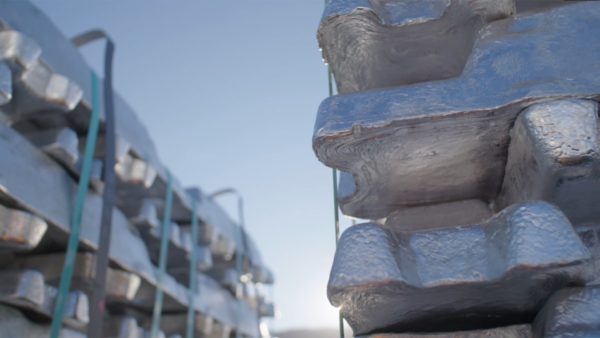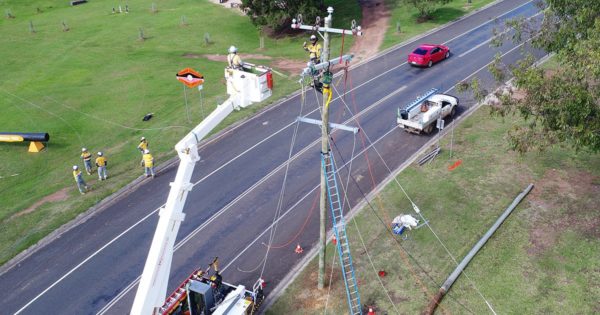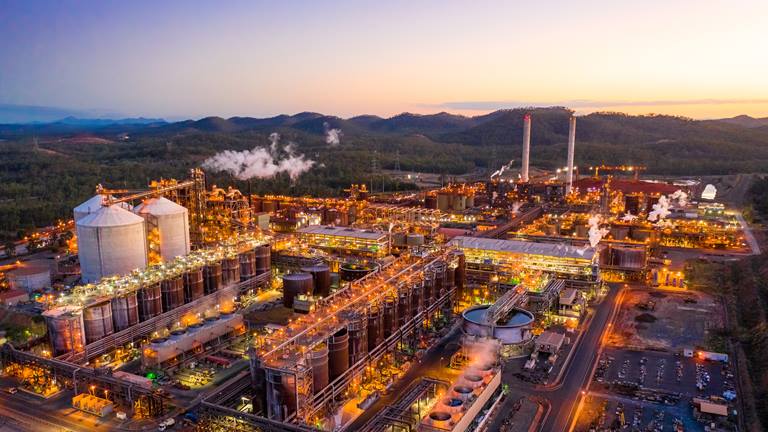Rio Tinto has issued a formal market Request for Proposals (RFP) intended to support the development of multiple new large-scale wind and solar projects that can, in parallel with firming solutions, start supplying power to the miner’s Queensland aluminium assets by 2030.
The mining giant’s aluminium chief Ivan Vella on Thursday said Rio Tinto is seeking proposals that can competitively meet the energy needs of its three production assets in the Gladstone region: the Boyne smelter, the Yarwun alumina refinery and the Queensland Alumina refinery.
Rio Tinto said the three projects would “need a combined 1,140MW of reliable power to operate, which equates to at least 4,000MW of quality wind or solar power with firming”.
Vella said it is expected the new wind and solar projects will start supplying power to Rio Tinto’s Gladstone operations by the end of the decade.
“As Queensland’s largest energy user, we have an important role to play in driving the development of competitive renewable energy sources for our Gladstone assets and supporting the state’s renewable energy targets,” he said.
“It is early in the process, but this is an important step towards meeting both our group climate change target of halving our emissions by the end of the decade and our commitment to net zero emissions by 2050.”

Image: Rio Tinto
Australian Conservation Foundation’s Gladstone campaigner Jaclyn McCosker said the announcement shows Rio Tinto is “serious about using large-scale wind and solar to power its energy-hungry aluminium refineries and smelters”.
“Coupled with the news that Australia’s energy ministers have agreed to come up with a national transition plan to phase out fossil fuels, this marks a significant moment in Australian action to tackle climate change,” she said.
“Queensland can and should be a renewable energy superpower and central Queensland has all the ingredients to thrive in a low carbon world.”
Advocacy group Solar Citizens deputy director Stephanie Gray said Rio Tinto’s demonstrates the scale and speed of change underway in Australia’s energy system but warned more grid infrastructure is needed to support clean energy development in Queensland.
“Unfortunately, in central and northern Queensland there’s currently a cap on how much clean energy can be developed locally because there’s a dire need to upgrade grid infrastructure,” she said.
“In both Central and North Queensland there are significant proposals on the table to develop renewable hydrogen facilities that will require many more solar and wind projects to connect locally.”

Image: Energex
Gray called on the new federal government to work with the Queensland government to fast-track the development of “vital” grid upgrades around Gladstone.
Rio Tinto’s announcement of the RFP comes after the group last year strengthened its climate change ambitions, confirming it would invest approximately $7.5 billion to help achieve its targets, including cutting carbon emissions by 50% by 2030. Rio Tinto committed to increasing renewable power usage, saying its decarbonising efforts will focus on its aluminium operations. The division accounts for about 70% of the group’s direct and indirect emissions.
That announcement followed the signing of a statement of cooperation with the Queensland government to investigate off-take agreements for large-scale renewable energy projects to power its aluminium assets in the state.
“We are working closely with the Queensland government on the role we can play by underwriting long-term green offtake for our industrial assets,” Vella said.
“This should help create the industrial demand needed to develop a globally competitive green energy solution and lead to more processing and manufacturing in central Queensland.”
Rio Tinto’s shift towards renewable energy mirrors the Queensland government’s ambitions with Energy Minister Mick de Brenni saying the state remains focused on “connecting more renewables and back-up storage to our grid”.
“We are scheduled to deliver at least another 10 solar, five wind farms, three large-scale batteries and one pumped hydro scheme by 2024,” he said.
“By the end of 2024, this project pipeline will add more than 1,700MW of wind, 1,363MW of solar and at least 300MW of storage into Queensland’s energy system.”
This content is protected by copyright and may not be reused. If you want to cooperate with us and would like to reuse some of our content, please contact: editors@pv-magazine.com.









2 comments
By submitting this form you agree to pv magazine using your data for the purposes of publishing your comment.
Your personal data will only be disclosed or otherwise transmitted to third parties for the purposes of spam filtering or if this is necessary for technical maintenance of the website. Any other transfer to third parties will not take place unless this is justified on the basis of applicable data protection regulations or if pv magazine is legally obliged to do so.
You may revoke this consent at any time with effect for the future, in which case your personal data will be deleted immediately. Otherwise, your data will be deleted if pv magazine has processed your request or the purpose of data storage is fulfilled.
Further information on data privacy can be found in our Data Protection Policy.